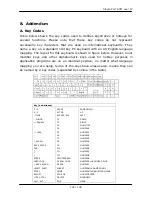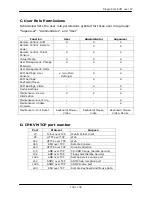
Single Port KVM over IP
the Event Log Settings you can choose how many log entries are shown on
each page. Furthermore, you can clear the log file here.
List logging enabled
The common way to log events is to use the internal log list of the
IP-KVM . To show the log list, click on “Event Log” on the “Maintenance”
page.
Since the IP-KVM's system memory is used to save all the information,
the maximum number of possible log list entries is restricted to 1.000
events. Every entry that exceeds this limit overrides the oldest one,
automatically.
Warning
If the reset button on the HTML frontend is used to restart the
IP-KVM, all logging information is saved permanently and is
available after the IP-KVM has been started. If the IP-KVM loses
power or a hard reset is performed, all logging data will be lost.
To avoid this, use one of the following log methods.
NFS Logging enabled
Define a NFS server, where a directory or a static link have to be
exported, to write all logging data to a file that is located there. To
write logging data from more than one IP-KVM devices to only one NFS
share, you have to define a file name that is unique for each device.
When you change the NFS settings and press the button “Apply” , the
NFS share will be mounted immediately. That means, the NFS share
and the NFS server must be filled with valid sources or you will get an
error message.
SMTP Logging enabled
With this option, the IP-KVM is able to send Emails to an address given
by the Email address text field in the Event Log Settings. These mails
contain the same description strings as the internal log file and the mail
subject is filled with the event group of the occurred log event. In order
to use this log destination you have to specify a SMTP server, that has
to be reachable from the IP-KVM device and that needs no
authentication at all (<serverip>:<port>).
SNMP Logging enabled
If this is activated, the IP-KVM sends a SNMP trap to a specified
destination IP address, every time a log event occurs. If the receiver
90 / 109






























